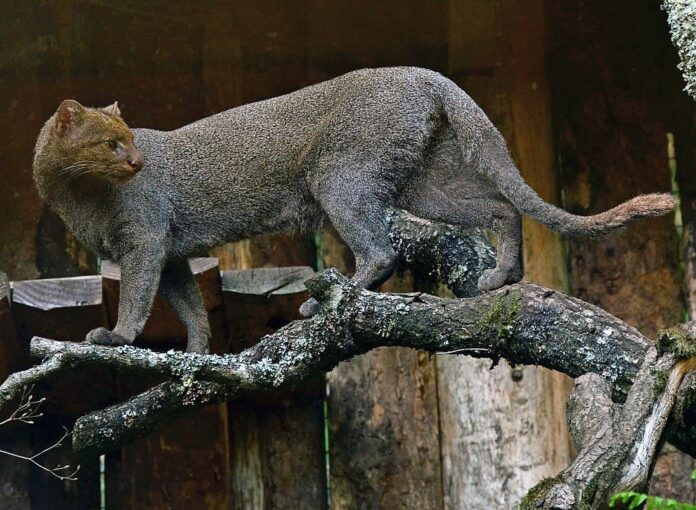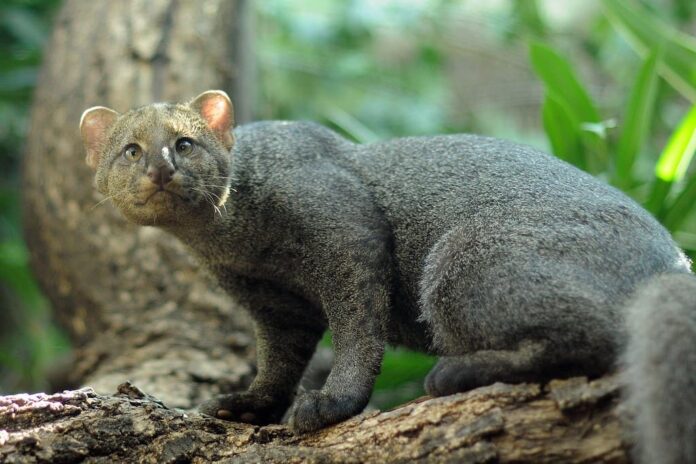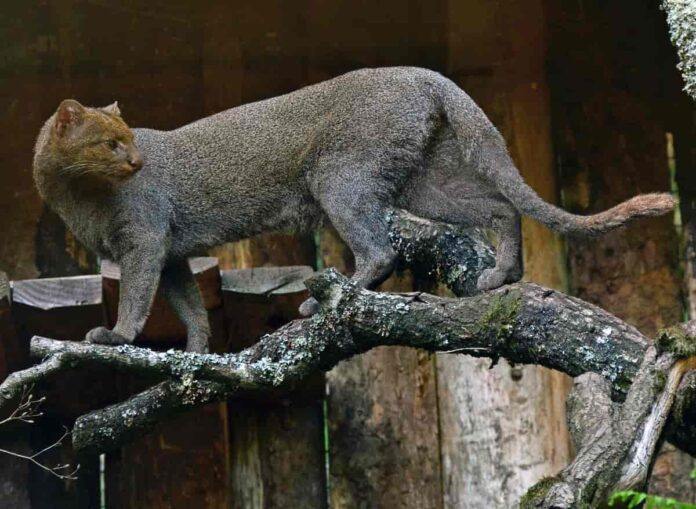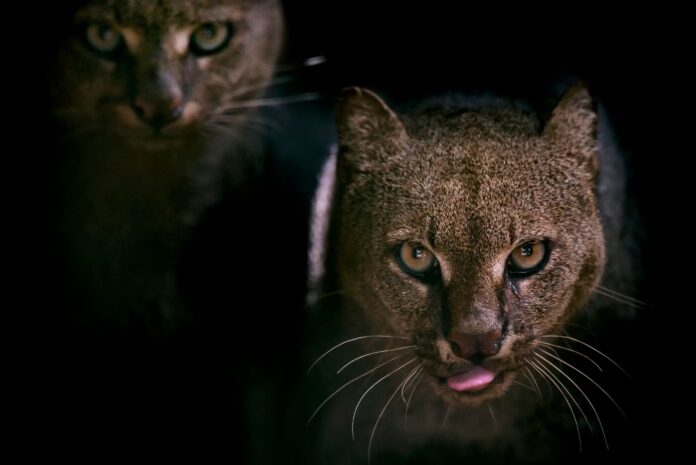Jaguarundi is a lesser-known wild cat species whose name people don’t even know. Speaking of names, Jaguarundi is pronounced [yag-wer-run-di] or [jag-wer-run-di]. It comes from the Old Guarani word “yaguarundi”, which means dark jaguar. This wild cat’s closest relative is the cougar, which is like the smaller version of the big cat. Little but fierce, let’s find out more about these little predators below.
1Appearance

A jaguarundi reaches a height of 36 centimeters at the shoulder, which is twice as big as a domestic cat. This wild cat has a small narrow head and small ears that make it look like an otter. This is why sometimes it is called “otter cat” or “weasel cat” in Mexico. Its elongated and slender body is between 53 and 77 centimeters with a strong muscular tail that is around 31 to 52 centimeters. While the body is long, the legs of this wild cat are rather short. However, those legs are efficient and quick enough to make a jaguarundi an excellent tree climber. Their long tails give them balance when they jump from branch to branch, and they can swim across medium-sized rivers. Speaking of talents.
One of the most interesting things about them is that there are two color morphs, gray and red. The gray morph is more common, with blackish to brownish-gray fur, while the red morph is chestnut to foxy red. Also, the gray ones have two white patches under their nose, and the red ones have a cream or white throat. Technically, the dark coat is associated mostly with wet and dense forests, whereas the red morph is associated with dry and open habitats. Nevertheless, these morphs can be found in all environments, and the same litter can also have individuals of both colors. The melanistic ones have been reported, and they are silvery-gray in color, looking absolutely majestic.
2Behavior

Not different from most wild cats, the jaguarundi is usually solitary, but it also forms pairs. The pairs are usually the mothers and older kittens, or the mating pairs during the mating season from November to December. A female gives birth to a litter of one to four kittens in dens in dense thickets or hollow logs. The young are born deaf and blind, so the mother cares for them and feeds them for around one month. Despite being elusive and shy, they have up to 13 separate vocalizations to communicate, ranging from chatting and chirping to purring and more. These distinct calls serve different purposes such as attention calls, contact calls, greeting, and warning signals. It is more active during the day when it normally goes out to hunt during daytime and evening hours.
3Feeding& Habitats

With its flawless tree-climbing skills, a jaguarundi can easily prey on animals both in the trees and on the ground. The menu consists of a wide range of prey such as arthropods, birds, fish, frogs, reptiles, rodents, and small mammals. It stalks its prey and pounces on it, but jaguarundi also occasionally feeds on fruit. The most impressive part is that they can leap up to 2 meters into the air to catch birds. Not to mention that it can pursue marmosets up in trees, jaguarundi is one ferocious predator.
This wild cat is native to the Americas, inhabiting both closed and open habitats. They have a wide distribution from deciduous forests and tropical rainforests all the way to deserts and thorn scrubs. They are also found in cloud forests, mangroves, and savannas along with brushy lowland areas with cactus, mesquite, and other spiny plants. Jaguarundi usually lives near water so it is also common to see them around the lakes, rivers, streams, and swamps. Across their ranges, they do have some predators such as boa constrictors, cougars, and domestic dogs. The only threats that jaguarundis are facing now are habitat fragmentation, habitat loss, and persecution for killing poultry.
Related Post: Rare & Beautiful Wild Cat Species




